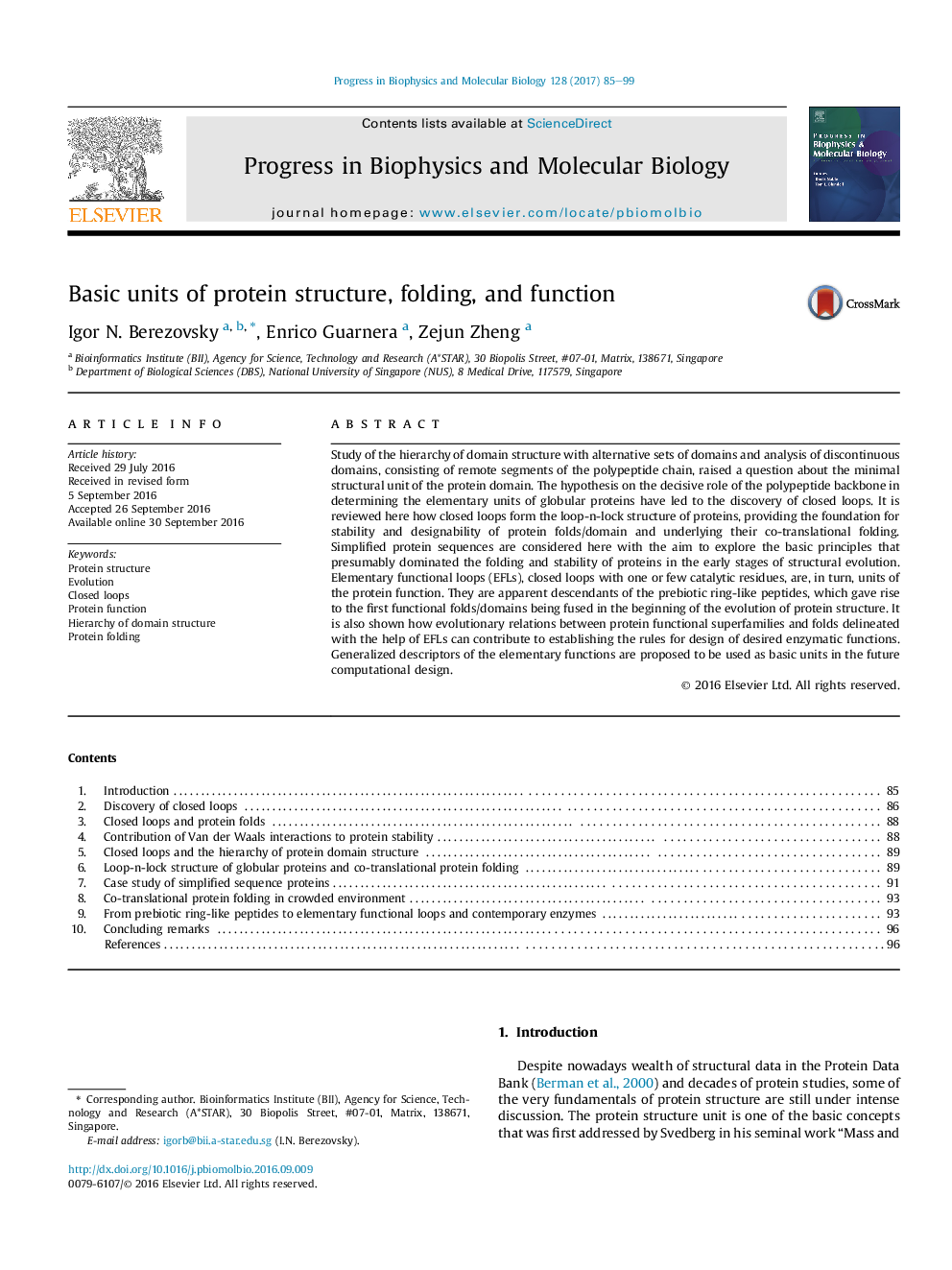| Article ID | Journal | Published Year | Pages | File Type |
|---|---|---|---|---|
| 5519918 | Progress in Biophysics and Molecular Biology | 2017 | 15 Pages |
Study of the hierarchy of domain structure with alternative sets of domains and analysis of discontinuous domains, consisting of remote segments of the polypeptide chain, raised a question about the minimal structural unit of the protein domain. The hypothesis on the decisive role of the polypeptide backbone in determining the elementary units of globular proteins have led to the discovery of closed loops. It is reviewed here how closed loops form the loop-n-lock structure of proteins, providing the foundation for stability and designability of protein folds/domain and underlying their co-translational folding. Simplified protein sequences are considered here with the aim to explore the basic principles that presumably dominated the folding and stability of proteins in the early stages of structural evolution. Elementary functional loops (EFLs), closed loops with one or few catalytic residues, are, in turn, units of the protein function. They are apparent descendants of the prebiotic ring-like peptides, which gave rise to the first functional folds/domains being fused in the beginning of the evolution of protein structure. It is also shown how evolutionary relations between protein functional superfamilies and folds delineated with the help of EFLs can contribute to establishing the rules for design of desired enzymatic functions. Generalized descriptors of the elementary functions are proposed to be used as basic units in the future computational design.
